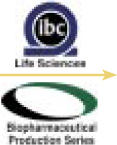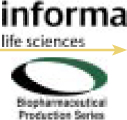
IBC’s 16th annual Bioassay Conference is the meeting for learning about developing, qualifying, validating, and maintaining important biological assays. Come and discover the newest techniques for streamlining development and validation using easy-to-understand statistical approaches. Hear how other assay developers are accelerating their development plans and meeting aggressive timelines. Learn about use of the newest technology and regulatory trends to develop the right assay, at the right time, in the quickest possible way. After attending this conference, you will catapult your assay development efforts to a higher and more successful heights.
This is the only forum that focuses solely on biological assays. Take advantage of this unique opportunity to discuss nitty gritty practical approaches with your colleagues and explore best practices that can be applied right away.
Highlights-
Keynote: “Potency Assays in Development and Lot-Release: An Insider Perspective” by Hélène Gazzano-Santoro, PhD, associate director of quality bioanalytical development, Genentech
-
Trials and tribulations of developing cell-based assays: case studies on antibody-dependent cellular cytotoxicity (ADCC) assays, approaches to using alternate testing strategies, developing difficult apoptosis potency assays, and case study on neutralizing antibody assays
-
Potency assays involving immunogenicity (case studies)
-
Maintaining assays for the long run (what to monitor and how to establish limits)
-
Using design-of-experiments (DOE) to speed up validation (case studies)
-
Streamlined approaches to validating animal assays
-
Parallelism (practical approaches during development)
-
USP <111> update
-
Dose-response model development
-
Focuses on biological assays, especially cell-based potency assays. All other events cover all types of analytical methods and end up focusing on physical chemical method.
-
Brings together statistical experts and assay experts and encourages everyone to talk the same language. We have understandable statisticians explaining critical techniques and approaches, then those talks are followed by scientists presenting case studies showing how these approaches really work.
-
Hear about case studies that no one has time to report on in the journals. So it is at this meeting that people can see how well assays are performing (% precision, % accuracy, specificity issues) and what new technologies people are using for bioassays.
Working Session: “Practical Approaches to Establishing Parallelism for Your Potency Assay”
A keystone of any quantitative method that uses reference material is the similarity of the test and reference samples’ dose response curves. In the field of biological assays this similarity is a formal sample system suitability requirement assessed by comparing the dose-response curves of the two samples. This comparison is a formal assessment, with preestablished acceptance criteria, and it must include the critical parts of the dose response curves.
Historically, for animal assays, this involved comparing the slopes of two supposedly parallel lines thus similarity is often referred to as parallelism. However, with the popularity of four-parameter model fits, similarity has expanded to include similarity of asymptotes as well as slopes.
In the past five years there have been many heated discussions, not only about what parts of these dose response curves should be compared, but also about how those comparisons should be carried out. Currently the US Pharmacopeia <111> and the European Pharmacopoeia Section 5.3 recommend the F-test. However, the USP is drafting a chapter recommending an equivalence testing paradigm. Meanwhile in the face of all this turmoil, assays are developed and curve similarity (parallelism) is ascertained.
Come to this workshop, learn the terminology, the math, the history and most important what bioassay professionals are doing in their labs to establish this critical assay system suitability.
Workshop Chair: Laureen Little, PhD, principal consultant, Quality Services
Instructor: David Lansky, PhD, president, Precision Bioassay
European Featured Event Comparability for Biologics 24–25 June 2008Biosimilars
26–27 June 2008
Corinthia Towers Hotel, Prague, Czech Republic

European regulators are leading the way on the path for biosimilars, but regardless of the publication of guidance for industry, many questions remain. The biosimilars market is on the verge of rapid expansion. Despite opposition from originator companies, the European market continues to grow, and biosimilars now represent one of the most evolving areas of product development in the biopharmaceutical industry.
With this in mind, Informa Life Sciences has developed two colocated conferences to tackle some of the key issues that those in the biosimilars market are facing. These conferences are back-to-back allowing you to make the most of your time out of the office at this event. The Comparability for Biologics meeting will touch on the important topics of functional comparability, potency assays, binding assays, and immunogenicity. The Biosimilars conference will delve into the regulatory path as well as accelerating bringing your biosimilar to market.
Comparability for BiologicsAttend this informative event and gain in-depth insight into critical industry issues. The conference will include hot topics such as aggregation, glycosylation, and immunogenicity. The event features many scientific and regulatory case studies, providing you with information immediately applicable to your company’s daily activities. This invaluable learning opportunity will enable you to discover how best to conduct your comparability studies.
Highlights include-
Potential impact of process change on product quality, and on time and cost
-
Quality by design (QbD) and comparability
-
New developments in biophysical analysis
-
Case studies from leaders in the field
-
Focus on aggregation, product and process-related impurities, and stability
-
Roadmap for glycan analysis of glycotherapeutics
-
Functional comparability for preclinical and clinical safety and efficacy
-
Potency assays, binding assays and immunogenicity assays
-
EMEA and FDA guidance and guidelines
-
Opportunities for discussion with the experts, and for networking
Featured Speakers:
Thomas J. Porter, PhD, director of characterization and analytical development, Wyeth Biopharma
Wassim Nashabeh, PhD, director of CMC regulatory affairs, Genentech, Inc.
Carlo Emanuele Giartosio, PhD, director of analytical chemistry, MerckSerono
Christopher Bravery, PhD, pharmaceutical assessor of bi
ologicals and biotech unit, MHRA
Denise O’Hara, PhD, section head of bioanalytical R&D, Wyeth Research
Sue Stephens, PhD, head of clinical assay and nonclinical development, UCB-Group
www.informa-ls.com/comparability2008
VIP Code: CQ3354BPIAD
This conference is the only event in Europe to cover the key regulatory, scientific, and commercial issues facing companies working with biosimilars, enabling you to evaluate the vast opportunities available and barriers to overcome. Based on in-depth research and featuring an expert panel of speakers, this event will allow you to successfully interpret the latest regulatory pathways in Europe, the current state of play in the United States, and learn how to deal with the technical aspects of characterization, comparability, and immunogenicity.
Hear the latest regulatory developments in the European Union and United States and determine your best route to market approval. Discover how to ensure the safety of your product. Find out about accelerating the development of your clinical trials while satisfying regulatory requirements. Learn about the current commercial opportunities available for biosimilars and how to succeed in this very competitive market.
VIP Code: CQ3355BPIAD
Quote your VIP Code to save up to £200 if you book before 4th April 2008.
